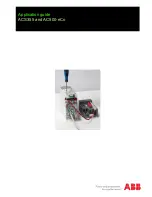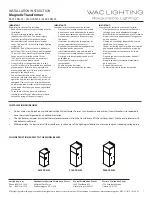
8 S&C Instruction Sheet 1072-530
Network Setup
The SpeedNet Radio network depicted in Figure 2 on page 7 contains three Ethernet
segments. The first segment uses the 192.168.1.0 Class C subnet that encompasses a range
of addresses from 192.168.1.1 to 192.168.1.254. The second segment uses the 192.168.2.0
Class C subnet that encompasses a range of addresses from 192.168.2.1 to 192.168.2.254. The
third segment uses the 192.168.3.0 Class C subnet that encompasses a range of addresses
from 192.168.3.1 to 192.168.3.254.
The wireless network shown in Figure 2 uses the 192.168.202.0 Class C subnet. This
subnet is different from the subnets used for the Ethernet segments. The wireless interface
of the SpeedNet Radio from the Source Node 1 is assigned an address of 192.168.202.1. The
wireless interface of the SpeedNet Radio from the repeater node is assigned an address
of 192.168.202.2. The wireless interface of the SpeedNet Radio from Destination Node 2
is assigned an address of 192.168.202.3.
In Figure 2, each SpeedNet Radio host ID is 1 (as in 192.168.3.1), while the connected
application device uses a host ID of 2 (as in 192.168.3.2). Following a numbering scheme
such as this will make it easier to keep track of which IP addresses are assigned to each
device.
NOTE:
All SpeedNet Radios, regardless of their role within the network, must use
unique IP addresses for their Ethernet and wireless interfaces. All the SpeedNet Radios
on the same mesh should have wireless IP addresses in the same subnet. All the SpeedNet
Radios on the same mesh should have different Ethernet subnets.
Refer to S&C Instruction Sheet 1072-510 for additional information about network
planning.









































